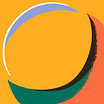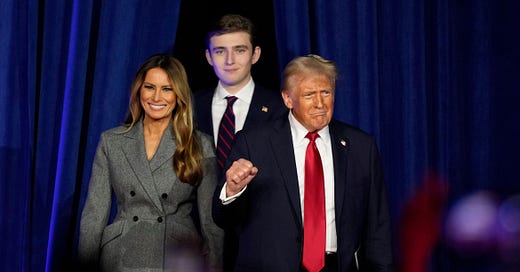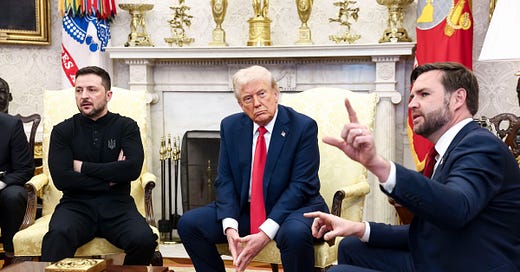No end to war in Ukraine. Instead, according to President Macron, “An end of abundance”. The two things are related, but Macron’s warning was wider than the fallout from Russia’s invasion of its neighbour, and he was right to make it.
Six months on from the invasion, the war now seems to be in its third phase – one of protracted attrition. Phase one saw an overconfident and poorly led Russian military fail in its aims to sweep through the country and take Kyiv. That gave the Americans, British, and others, time to start the flow of weapons which has led to the current status. In phase two, Russia focussed on the Donbass region and made gains – linking the Donbass down to Kherson and Crimea, via Mariupol. It now occupies a fifth of Ukraine.
During most of this period, Russia’s artillery had a longer range than Ukraine and so was able to slowly push defensive lines backwards. However, the American supplied High Mobility Artillery Rocket System (HIMARS) and other NATO artillery have made eastern and southern Ukraine more of an equal killing field.
So now phase three – attrition over a 620-mile-long mostly static front line. But the attrition is not just being fought on the battlefield, it is going to increasingly be fought in the domestic politics of the European countries including the UK. This is partially behind President Macron’s remarks.
His aim was wide, he spoke of high temperatures, wildfires, drought and storms – “We are living the end of what could have seemed an era of abundance … the end of the abundance of products of technologies that seemed always available”. The French leader is right politically to call it to avoid the impression that events overtake him, but also right because the public needs to be prepared for what may be coming.
In the short term he’s talking about energy shortages. Costs were already going up before Russia’s act of aggression, but that pushed them higher, and Moscow has engineered possible shortages this winter. In the longer term, he’s arguing that there may be difficulties finding a variety of things we are accustomed to.
Gas prices in France are currently frozen, which has helped keep inflation at about 6% – lower than many of its EU neighbours, but the cap may be lifted at the end of the year.
Germany is also warning of difficulties this winter and is acting. From Sept 1st, heating in public buildings will be capped at 19 degrees, or 12 degrees if work in them requires intensive physical movement. In corridors, it will be switched off completely and there will be no hot water in bathrooms. (Hospitals are exempt). Private sector companies are being encouraged to do likewise and homeowners advised to reduce heating temperatures by 2%. One consequence of this public messaging is that coal production is going up and ordinary Germans are stocking up. Some scenarios see energy blackouts this winter unless energy consumption is reduced 20%.
The UK is not reliant on Russian gas, but that does not help with rising energy prices. The UK’s storage capacity is risible – enough for about 5 days use in winter – and hopes that Norway and France would fill any energy gaps is looking less likely every day. Worst case scenarios for this winter suggest the heating may go off on certain days, but with the government currently living in exile in the Tory Heartlands, public messaging on this is shedding less light than a 10-watt lightbulb.
President Putin looks on with interest. If the lights go down, and inflation goes up, he can look forward to outraged voters asking their governments why they’ve allowed this, and many will demand that they take a less confrontational position vis a vis Russia. If they won’t, there are Putin apologists around, such as France’s Le Pen and Italy’s Salvini, happy to take their place and argue that Ukraine is a faraway country about which we know too much. The Kremlin has spent years playing divide and rule in Europe, now it wants to reap the dividends.
American help for Ukraine is guaranteed until at least 2025 but, if Trump or a Trump-like Republican wins the White House, that could change. This week, the US approved another $3 billion for high end weapons for Ukraine. They won’t reach the front lines for at least a year, but the commitment shows that the U.S. is confident Ukrainian resistance will not crumble.
The next few weeks should see renewed fighting around Kherson. Then the winter will come in and the front lines will freeze. In the absence of a surprise peace deal we can expect ground fighting to resume in the spring as neither side appears ready to compromise. Only then, and only if one or both are so exhausted they cannot go on, the outlines of the deal required may re-emerge.
As things stand Ukraine cannot agree to Russia occupying the land corridor linking Donbass to Crimea and its control of Kherson which gives it access to the Dnieper River. Kyiv knows that Moscow would (and may anyway) annex the territory, declare it part of Russia, include it under Russia’s nuclear umbrella, and then dare NATO to send weapons to be fired into ‘Russian’ territory.
The Kremlin wants to break the will of the Europeans to continue to support Ukraine. President Macron says our higher energy bills are part of “the price to pay for freedom”. That’s an assertion which may be challenged as the winter nights draw in.










